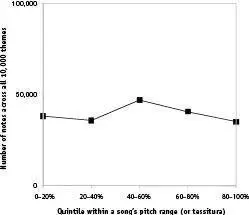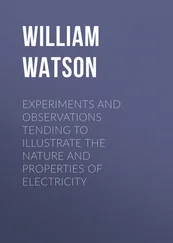Mark Changizi - Harnessed - How Language and Music Mimicked Nature and Transformed Ape to Man
Здесь есть возможность читать онлайн «Mark Changizi - Harnessed - How Language and Music Mimicked Nature and Transformed Ape to Man» весь текст электронной книги совершенно бесплатно (целиком полную версию без сокращений). В некоторых случаях можно слушать аудио, скачать через торрент в формате fb2 и присутствует краткое содержание. Год выпуска: 2011, Издательство: Perseus Books Group, Жанр: Старинная литература, на английском языке. Описание произведения, (предисловие) а так же отзывы посетителей доступны на портале библиотеки ЛибКат.
- Название:Harnessed: How Language and Music Mimicked Nature and Transformed Ape to Man
- Автор:
- Издательство:Perseus Books Group
- Жанр:
- Год:2011
- ISBN:нет данных
- Рейтинг книги:5 / 5. Голосов: 1
-
Избранное:Добавить в избранное
- Отзывы:
-
Ваша оценка:
- 100
- 1
- 2
- 3
- 4
- 5
Harnessed: How Language and Music Mimicked Nature and Transformed Ape to Man: краткое содержание, описание и аннотация
Предлагаем к чтению аннотацию, описание, краткое содержание или предисловие (зависит от того, что написал сам автор книги «Harnessed: How Language and Music Mimicked Nature and Transformed Ape to Man»). Если вы не нашли необходимую информацию о книге — напишите в комментариях, мы постараемся отыскать её.
Harnessed: How Language and Music Mimicked Nature and Transformed Ape to Man — читать онлайн бесплатно полную книгу (весь текст) целиком
Ниже представлен текст книги, разбитый по страницам. Система сохранения места последней прочитанной страницы, позволяет с удобством читать онлайн бесплатно книгу «Harnessed: How Language and Music Mimicked Nature and Transformed Ape to Man», без необходимости каждый раз заново искать на чём Вы остановились. Поставьте закладку, и сможете в любой момент перейти на страницу, на которой закончили чтение.
Интервал:
Закладка:
Now that we have expanded on rhythm, we will move on to further evidence that melodic contour acts as Doppler pitch.

Figure 43. Data from 60 pieces in Denes Agay’s An Anthology of Piano Music, Vol. II: The Classical Period showing that louder portions of music tend to be packed with more notes. Each of 234 contiguous segments of constant loudness were sampled, counting the total number of notes and beats; averages are over these 234 segments. Data collected and analyzed by Caitlin Morris. (Standard errors shown.)
5 Home Pitch
We have discussed how melody consists of one pitch at a time (in the Chapter 4 section titled “Only One Finger at a Time”), which is exactly what we expect if melody has its origins in Doppler shifts. We also mentioned earlier in that chapter (in the section titled “Why Pitch Seems Spatial”) that melodic pitch tends to change in a fairly continuous fashion. At any one time, then, melody is at one pitch, and changes pitch roughly as if it is “moving” through pitches. Thinking of melody as if it is an unknown creature we wish to better understand, it is natural to ask about melody’s home and where it roams within the space of pitches. In this Encore section we’ll discuss three facets of melody’s home range and foraging behavior.
Let’s begin with one of the most salient features about the Doppler effect, which is that for a mover at constant speed there is a maximum and minimum pitch the mover can attain, these occurring when the mover is headed directly toward and directly away from the listener, respectively. Doppler pitches for any mover are therefore bound to a fixed home range. If Doppler pitches are confined in this sense to a fixed home range, then the music-is-movement theory predicts that melodies, too, should tend to confine themselves to a fixed home range. Melodies should tend to behave as if there is an upper or lower boundary to pitch. Does melody move around as if bound within an invisible fence, as predicted, or does melody move more freely? Although melody is highly variable, it has long been noticed that any given melody tends to confine itself to a fairly fixed window of pitches called its tessitura. The notion of tessitura allows that the melody may occasionally punch through a barrier, but the barriers are still worthy of recognition because of their tendency to hold the pitch inside. The tessitura is, I submit, music’s implicit recognition that a single constant-speed mover has a fixed range of Doppler pitches it can express.
Melody, then, has a fixed home range, consistent with Doppler shifts. Let’s now look into how melody spends its time within its home range. If melody really is acting like Doppler shifts, then melody should distribute itself within its home range in a similar manner to Doppler pitches. How do Doppler pitches distribute themselves within their home range? In particular, for a mover in your vicinity carrying out behaviors, in which directions does the mover tend to go? Many of the movers around you are just doing their own thing, carrying out actions that do not involve the fact that you are there. These movers will tend to go in any direction relative to you. But even movers who are interacting in some way with you will tend not to strongly favor some directions over others. For example, performers on a stage will, over the course of the show, move in all directions relative to any audience member. In fact, although their actions onstage may be highly intricate, they will often be very roughly summarized as moving in circles out in front of the listener, an illustrative case we had used earlier in Figure 25 of Chapter 4. Such circle-like behavior tends to sample broadly from all directions. Individual short bouts of behavior, then, can be anywhere in the Doppler pitch range. Across bouts of behavior, then, Doppler pitches tend to occur with fairly uniform probability over the Doppler range. For melody, then, we expect that individual melodic themes will be highly variable in their pitch distribution, but we also expect that, on average, these themes will sample pitches within their tessitura fairly uniformly.
That is, in fact, what we found among the classical themes. Despite wide variability from theme to theme, across the 10,000 classical themes the average distribution of notes across the tessitura is fairly flat, as shown in Figure 44. One might have expected to find that, say, melody strongly favors a single central pitch, and meanders away from this pitch as if tied to it by an elastic band, in which case the expected distribution would be disproportionately found on or near that pitch, and would fall steeply lower and lower the farther away a pitch is from that central one. Melody does not, however, behave like this. Melody is more Doppler-like, sampling pitches within its home range in a fairly egalitarian fashion.
Both Doppler and melodic pitches have a fixed home range, and both tend to roam fairly uniformly over their home. Let’s now ask whether some regions within the home range are “stickier.” That is, are there regions of the tessitura where, if the melody goes there, it takes longer to get out? This differs from what we just finished discussing—that concerned the total amount of time (actually, the total number of notes) spent in regions of the tessitura, whereas we are now asking how long in duration each singular visit to a region tends to be. To understand sticky pitches in melody, we look to the Doppler shifts of movers and ask whether any Doppler pitches are sticky.

Figure 44. Distribution showing where within a theme’s tessitura notes tend to lie, among the nearly 200,000 notes in the 10,000 classical themes. (That is, for each note, its position within its theme’s tessitura was determined and its quintile recorded. The plot shows the distribution of these values.) One can see that themes tend to have pitches sampling widely across the tessitura, with little tendency to favor some parts of the tessitura over others. (The shape looks identical if the distribution for each theme is separately determined, and all 10,000 distributions averaged, and the error bars on such a plot are far too small to discern.) Note again that this analysis uses the tessitura for each piece, rather than measuring the number of semitones away from the average pitch in the song; the latter analysis would lead to a more normal distribution, falling quickly in probability away from the average, something researchers Tierney, Russo, and Patel found in 2008. In light of the result here, the normal distribution they found is due to the distribution of tessitura widths, not the distribution of pitches within the tessitura.
There are, indeed, sticky Doppler pitches; they are the pitches near the top and bottom of the pitch range. To see why, imagine again a mover who is running in circles out in front of you, as depicted in Figure 45. Even though the mover is going through all directions uniformly, the pitches tend to change most quickly when the mover is whizzing horizontally by, either dropping quickly in pitch when passing nearby, or rising quickly in pitch when whizzing by at the far side of the circular path. When the mover is in the approach or withdrawal parts of the path, on the other hand, the pitch is fairly stable and high or low, respectively. Figure 45 shows these four segments of the circular path of the mover, and one can see that the pitch in the “toward” and “away” segments is much more stable than in the two “whiz by” segments. Doppler pitches vary less quickly near the top and bottom of their home range. The prediction, then, is that melodic pitch tends to change more slowly near the top and bottom of the tessitura. Does it? To test this, Sean Barnett measured the durations for all notes among the 10,000 classical themes. Each note was classified as a bottom, intermediate, or top note for its theme, and the average duration was computed for each of the three categories. Figure 46 shows these average durations, and one can see that lowest and highest notes in themes tend to be 17 percent longer in duration than notes with intermediate pitches.
Читать дальшеИнтервал:
Закладка:
Похожие книги на «Harnessed: How Language and Music Mimicked Nature and Transformed Ape to Man»
Представляем Вашему вниманию похожие книги на «Harnessed: How Language and Music Mimicked Nature and Transformed Ape to Man» списком для выбора. Мы отобрали схожую по названию и смыслу литературу в надежде предоставить читателям больше вариантов отыскать новые, интересные, ещё непрочитанные произведения.
Обсуждение, отзывы о книге «Harnessed: How Language and Music Mimicked Nature and Transformed Ape to Man» и просто собственные мнения читателей. Оставьте ваши комментарии, напишите, что Вы думаете о произведении, его смысле или главных героях. Укажите что конкретно понравилось, а что нет, и почему Вы так считаете.












